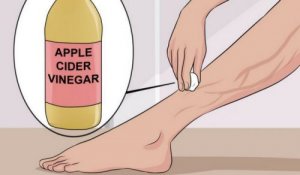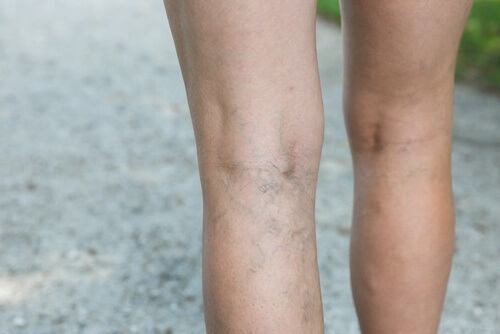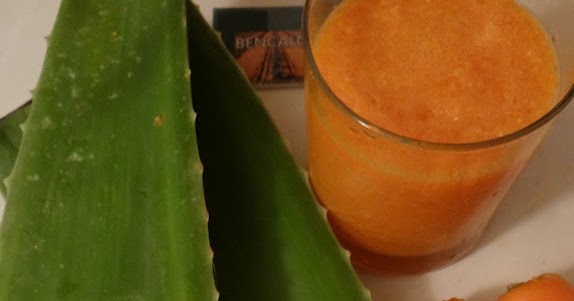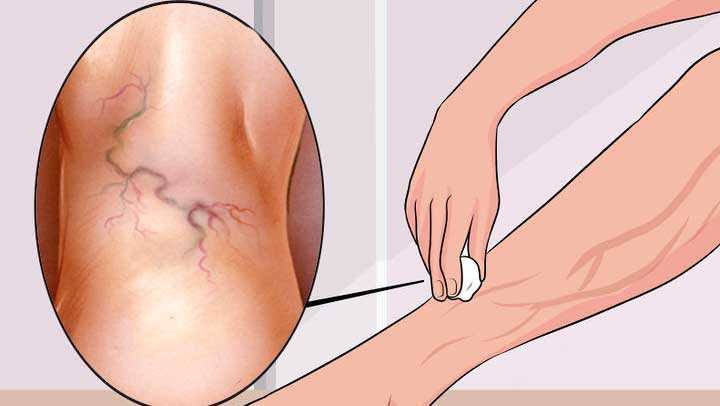Treat Varicose Veins With Aloe Vera, Carrot and Apple Cider Vinegar

Did you know that you can treat varicose veins with aloe vera, carrot, and apple cider vinegar?
Varicose veins are dilated veins that are close to the surface of the skin, and usually appear on the legs and ankles.
- Blood accumulates due to a malfunction of venous valves, causing varicose veins to develop as a result of the poor functioning of the circulatory system.
- Factors such as being overweight may make varicose veins more of a risk. In addition, they’re also more likely to appear during pregnancy.
- Another risk factor is having jobs that require spending a good portion of the working day standing, or otherwise on your feet.
- They are also more frequent among women, as well as the elderly.
Varicose veins aren’t just an issue because many people consider them unsightly – they can also cause irritation or discomfort.
Types of Varicose Veins

It may seem to many of us, from first glance, that all varicose veins are the same – but this is far from the case.
Depending on the stage of development of the condition, the color and intensity of the appearance of the varicose veins will be different.
We can break these differences down into four separate phases:
Phase 1 Varicose Veins
- In this initial phase, the varicose veins will be thin and have a light violet color. Sometimes, they can have a star-like formation – in this case, they’re commonly called spider veins.
- In general, this type of varicose vein only poses an aesthetic issue. However, at times they can also produce a feeling of heaviness and fatigue in the legs.
Phase 2 Varicose Veins
In Phase 2, the veins become more visible, and a series of recurring symptoms begin to make themselves noticed, as follows:
- A sensation of heaviness and tiredness in the legs
- Pain
- Cramps
- Tingling
- Warm sensations
- Stinging sensations
Phase 3 Varicose Veins
Here, the veins are more dilated, and the symptoms progressively increase.
Swelling, edema, and discoloration of the skin may appear.
Phase 4 Varicose Veins
Phase 4 varicose veins usually appear in areas also affected by eczema or ulcers. Since ulcers are difficult to treat and can become infected easily, the appearance of varicose veins in the same area can be risky.
That’s why it’s best to seek professional medical advice as soon as you can if you notice varicose veins forming in an area affected by ulcers.
Luckily for those of who suffer from varicose veins and want to start fighting back, it’s never been easier thanks to the range of options now available.
Even better, there are a number of totally natural treatments that can do wonders and help eliminate the symptoms completely.
Plus, you may be surprised to discover that one of the most effective solutions takes advantage of the natural properties of three common ingredients: carrot, aloe vera, and apple cider vinegar.
Treat Varicose Veins With Aloe Vera, Carrot and Apple Cider Vinegar

Ingredients
- 1 cup of grated carrots (115 g)
- 7 ½ tablespoons of aloe vera gel (115 g)
- Apple cider vinegar as necessary
Apple cider vinegar
When it comes to the treatment of varicose veins, there’s nothing better out there than the much-loved apple cider vinegar. It’s a very effective way of stimulating circulation, and it has anti-inflammatory properties.
Vinegar compresses alone can be a great way of alleviating the symptoms of varicose veins. Simply place the compress on the affected area and allow it to work its magic for 20 minutes.
Aloe vera
Aloe vera is a helpful little plant that can assist us in treating all kinds of skin problems. In the case of varicose veins, it’s a great ally thanks to its soothing and anti-inflammatory properties.
Carrot
The humble carrot, which you may well have overlooked in the refrigerator as part of tomorrow night’s dinner, is actually a varicose vein-busting superfood, thanks to its high levels of beta-carotene and antioxidants.
These not only improve the appearance of varicose veins, but also help to alleviate the other symptoms associated with them.
Preparation
The amounts indicated in the ingredient list are more of a guide – just bear in mind that you should be using equal amounts of aloe vera and carrot to make this treatment.
- First, peel the carrot and liquidize it in a blender until it becomes a smooth, wet paste.
- Next, remove any thorns from the aloe vera leaf, cut it in half lengthwise with a sharp knife. Then, using a spoon, remove the gel inside.
- Add this gel to your carrot paste.
- The next step is to add the apple cider vinegar. Do this slowly, stirring as you do so. The goal is to obtain a smooth and creamy paste.
- It’s important that the mixture isn’t too liquid, or it will be difficult to apply to the affected areas.
- Continue blending until you get the desired texture and until all the ingredients are well integrated.
How to Apply

- To get the best results, it’s important to apply this cream daily if possible.
- Spread the cream over the area affected by varicose veins and massage it upwards, from the ankles up to the calves, to help stimulate blood flow.
- Let it work for at least 30 minutes, and then rinse off with cold or warm water.
Main image courtesy of © wikiHow.com
All cited sources were thoroughly reviewed by our team to ensure their quality, reliability, currency, and validity. The bibliography of this article was considered reliable and of academic or scientific accuracy.
-
Ovejero, L., & Ibañez, P. (2012). Varices. Asociación Española de Enfermería Vascular y Heridas.
-
Moñux, G. (2009). Varices y trombosis venosa profunda. Libro de la salud cardiovascular.
-
Montenegro, J. (2017). Varices.
This text is provided for informational purposes only and does not replace consultation with a professional. If in doubt, consult your specialist.








